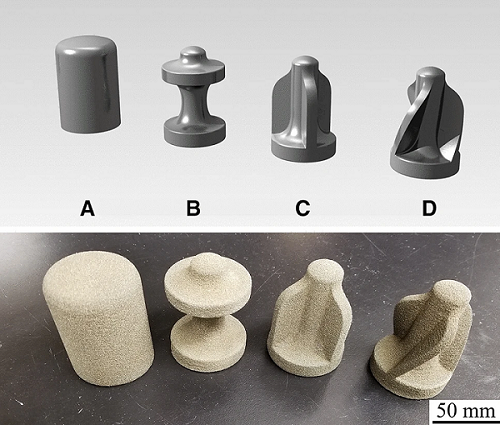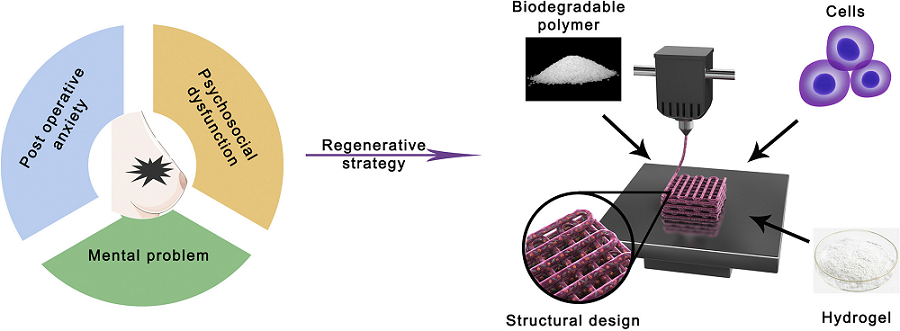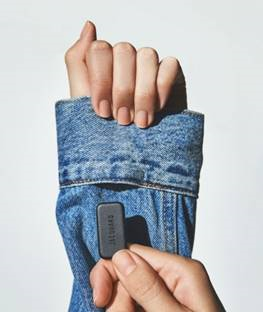3D Printing News Briefs, February 13, 2021: Jilin University, University of Alberta & Royal Military Academy, voxeljet, Google ATAP
We’ve got more research and 3D printed products to share with you in today’s 3D Printing News Briefs, so read on for the details!
3D Bioprinting Tissue & Organoids for Breast Structure Regeneration
According to a study by researchers from the Second Hospital of Jilin University in China, the most frequently diagnosed cancer in women in breast cancer, which has a fairly high mortality rate, and with nonmetastatic cases, it’s often necessary to remove part or all of the breast. Obviously, this isn’t always a great option in terms of mental health, which is why breast reconstruction comes highly recommended. There are multiple methods these days, including autologous fat grafting, artificial implants, and autologous-based tissue flaps, but there can be some pretty serious adverse effects, which is why some researchers are looking into regenerating breast structures with tissue engineering using stem cells and different biomaterials. This team looked at an alternative solution: 3D bioprinting.
The abstract states, “This review aims to illustrates the available manufacturing methodologies for 3D bioprinting of breast tissue, various biomaterials suitable for breast tissue regeneration, and previous approaches and designs for breast tissue regeneration. The review highlights the potential of regenerating breast adipose tissue and mammary gland using 3D bioprinting. Of note, to solve the remaining puzzles, we summarized and proposed feasible plans, which may ultimately facilitate 3D bioprinting technology as a promising breast reconstruction approach for clinical applications.”
You can read the full research paper here.
3D Printed Test Projectiles to Study IED Fragmentation

Top: 3D renderings of ballistic designs to be printed for the Royal Military Academy in Belgium; bottom: 3D printed ballistic samples of various geometries. Samples consist of silica sand bound together with a polymer binder. The designs were chosen to observe the changes in mass and stability
One of the biggest hidden threats faced by service members in the military today is buried charges, like improvised explosive devices (IEDs). These are particular dangerous, because ground debris near the blast area is rocketed out towards service members upon detonation as something called secondary fragmentation, which is made up of gravel, sand, and rocks. Soldiers do wear protective equipment, but in a test scenario, it can be hard to gather accurate data for the purposes of improving the equipment because most standard tests use an all-metal fragment simulating projectile, and not a mix of sand, gravel, and rock. A group of researchers from the University of Alberta in Canada and the Royal Military Academy in Belgium published a paper about their work developing a “methodical and reproducible method” for testing debris fragmentation damage; bottom line, they used a 3D printer from ExOne to fabricate test projectiles out of silica sand.
The abstract states, “We present herein the novel process of 3D-printing ballistic projectiles from silica sand, followed by launching with an air canon. Outlined within are the successes, challenges and proposed implementations of the technology. The 3D-printed sand projectiles achieved speeds over 170 m/s, resulting in measurable damage to single Kevlar sheets. Other flight parameters such as yaw and rotation were captured, resulting in observations about design and shape of the projectiles. It was found that one design performed better in terms of velocity, rotation and impact. The technology has the potential to disrupt the protective equipment sector by providing a controlled means of assessing natural fragmentation damage.”
You can read the full research paper here.
voxeljet Case Study on 3D Printed Coral Running Shoe
According to a case study by voxeljet, sneaker sales have been forecast to increase up to €91 billion by 2025, but the shoe industry still faces issues, such as sustainability, individualization, and automation. Shoe designer Shun Pin Pek, who studied product design at the Nanyang Technology University and focused specifically on footwear design at the Pensole Design Academy in the U.S., bought his first 3D printer in 2017 and realized the many possibilities that the technology offered for fabricating footwear, including geometric freedom and CAD data. Taking his design inspiration from the environment, he had the idea for his “Coral Runner” shoe concept, as coral and 3D printing have a similar growth strategy. He decided to use voxeljet’s High Speed Sintering (HSS) 3D printing to create an initial polymer prototype of the shoe, which consists of a single element without adhesives, fasteners, or seams. The Coral Runner prototype features a simple design, reinforced by the coral-like tube structures, and was 3D printed in resilient TPU material from Covestro.
“The great advantage of 3D printing is both on-demand manufacturing and the one-to-one transfer of the digital model into a real object,” Shun Ping Pek said. “While the Coral Runner could theoretically also be manufactured using conventional production techniques such as injection molding, this way would have been very challenging due to the consistent design. The HSS technology offers the ideal solution.”
Google ATAP Designing 3D Printable Tech Experiences
Google’s Advanced Technology and Projects (ATAP) hardware R&D lab group works to solve problems, often using 3D printing, such as Stratasys PolyJet technology, in its solutions. The group’s Jacquard by Google is a wearable platform that’s working to add the digital into everyday life, without disrupting the user. It includes an app, along with a small 3D printed physical tag that can be modified to fit soft goods, like a backpack or jacket, in order to provide the wearer with an interactive digital experience without having to hold a device. Instead, just by tapping or swiping the jacket sleeve, you can do things such as answer a phone call, take a photo, or pause your music. The versatile, multimaterial PolyJet 3D printing, paired with KeyShot 10 rendering software, allowed the team to merge a soft goods and hard goods product pipeline, using flexible, Pantone Validated color materials that can simulate surface textures.
“Printers are really catching up to how designers think about design and materials. The future is coming a lot faster than we thought it would, and at Google ATAP, we’re building the capabilities for us to be able to predict what’s possible,” said Bryan Allen, technical program manager and ATAP Lab lead.
Subscribe to Our Email Newsletter
Stay up-to-date on all the latest news from the 3D printing industry and receive information and offers from third party vendors.
You May Also Like
Precision at the Microscale: UK Researchers Advance Medical Devices with BMF’s 3D Printing Tech
University of Nottingham researchers are using Boston Micro Fabrication‘s (BMF) 3D printing technology to develop medical devices that improve compatibility with human tissue. Funded by a UK grant, this project...
3D Printing Webinar and Event Roundup: April 21, 2024
It’s another busy week of webinars and events, starting with Hannover Messe in Germany and continuing with Metalcasting Congress, Chinaplas, TechBlick’s Innovation Festival, and more. Stratasys continues its advanced training...
3D Printing Webinar and Event Roundup: March 17, 2024
It’s another busy week of webinars and events, including SALMED 2024 and AM Forum in Berlin. Stratasys continues its in-person training and is offering two webinars, ASTM is holding a...
3D Printed Micro Antenna is 15% Smaller and 6X Lighter
Horizon Microtechnologies has achieved success in creating a high-frequency D-Band horn antenna through micro 3D printing. However, this achievement did not rely solely on 3D printing; it involved a combination...
































